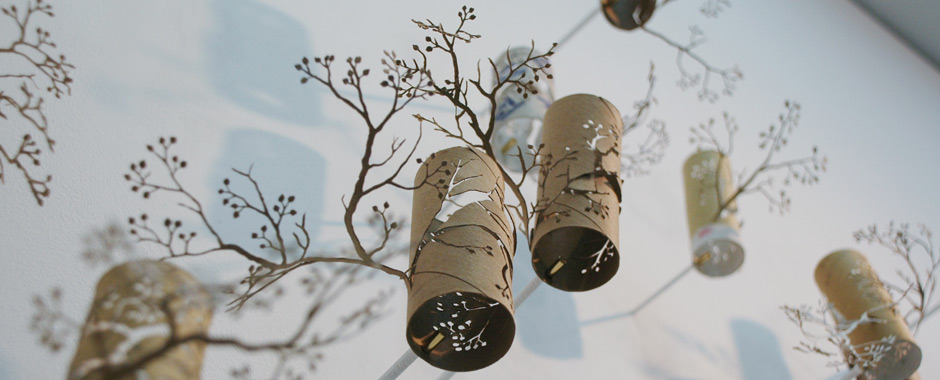Recycled Art
We live in
the time of K-cups and plastic bags—a use-it-once mentality. Most people don’t
think twice before throwing away their Starbucks coffee cup and once it enters
the bin, its fate becomes a mystery. However, readers of this U-M Recycling blog
have most likely thought about their waste. You’ve wondered if something was
compostable or suggested to a friend that they should recycle that newspaper,
but have you ever imagined that what you throw in the bin could take on a new
life, before it hits the trash pile? Artists across the world are reimagining
lives for the things we commonly throw away. It’s called recycled art.
The artists behind recycled art take the items we throw away and turn them into something entirely new. These materials connect us to the artwork and prompt us to consider our own waste. While these exceptional creations may be unconventional, we can look to them and ask ourselves how we reduce waste in our own lives.
The artists behind recycled art take the items we throw away and turn them into something entirely new. These materials connect us to the artwork and prompt us to consider our own waste. While these exceptional creations may be unconventional, we can look to them and ask ourselves how we reduce waste in our own lives.
 |
What came first?
|
Kyle Bean
Kyle Bean is a London artist who uses everyday objects to create his pieces. The image below he has constructed a chicken made from the eggshells that we all find in our kitchen waste. [1] If you can compost, then throw your egg shells into the compost bin!
 |
Corner Forest
|
Yuken Teruya
Based in New York, Yuken Teruya creates artwork inspired by his life in Japan. In his project, Corner Forest, he uses toilet paper rolls to create a forest that appears to be suspended in the air. He describes his role in the piece as “...helping the paper awakens its ability to come to life.”[2]While you might not transform your toilet paper rolls into artwork, you can extend their usefulness by putting them in the recycling bin!
Tim Noble and Sue Webster
 |
Real Life is Rubbish |
These two British
artists use an assortment of items commonly thrown away to assemble sculptures
that cast shadows. These shadows create highly accurate profiles of the artists.
In this piece, Real Life is Rubbish, 2002, you can find metal and wood scraps,
cans, and toilet paper rolls incorporated into the sculpture in addition to
countless other items that come from the waste bin.[3]
 |
Blowing Bubbles |
Derek Gores
This New York Artist recycles magazines, labels, and digital materials by creating elaborate collage portraits.[4]
We all remember making a magazine and newspaper collage in grade school. You can recycle your college reading materials at UMICH if you don’t think you’re up for another round of cut and paste!
Iri5 (“Iris”)
This Chicago based artist recycles cassette tapes to create her unique portraits. [5]While we may not have old cassette tapes lying around anymore, electronic waste is quickly filling up landfill space and may contain potentially hazardous materials. Dispose of your e-Waste responsibly at the annual free e-Waste Recycling Event hosted by the University of Michigan’s Office of Campus Sustainability each spring!
References
[1] Bean, K. (n.d.). Kyle Bean. Retrieved May 10, 2016, from https://kylebean.co.uk/aboutRecycled Art
[1] Bean, K. (n.d.). Kyle Bean. Retrieved May 10, 2016, from https://kylebean.co.uk/aboutRecycled Art
[2] Teruya, Y. (2003-2009). Corner Forest. Retrieved May 10, 2016, from http://www.yukenteruyastudio.com/projects-1/coner-forest
[3] Noble, T., & Webster, S. (2002). Real Life is Rubbish. Retrieved May 10, 2016, from http://www.timnobleandsuewebster.com/real_life_is_rubbish_2002.html





No comments:
Post a Comment